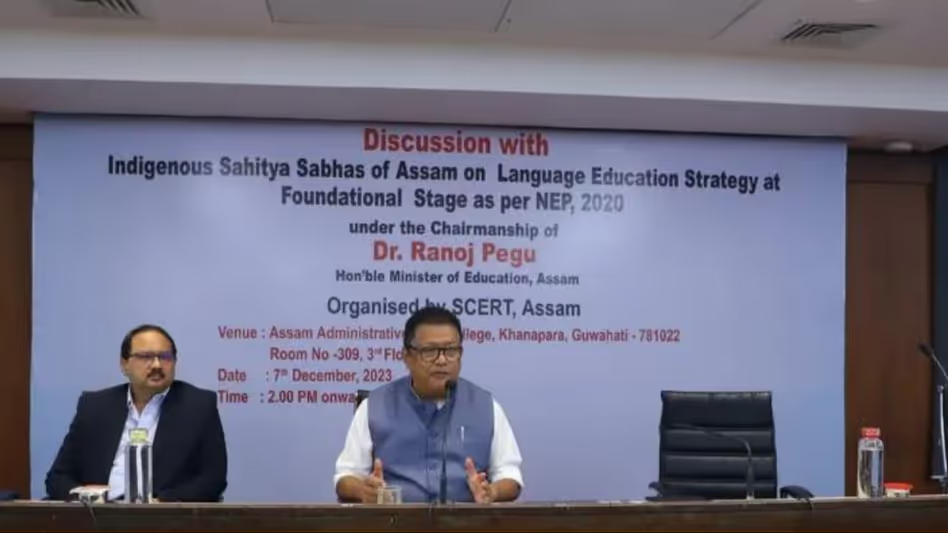Assam has introduced a new Tai language textbook for higher secondary students, marking a significant step towards preserving indigenous languages. The state government, under the leadership of Education Minister Ranoj Pegu and Chief Minister Himanta Biswa Sarma, aims to promote cultural sustainability through this initiative.
The textbook, launched on August 6, is part of Assam’s broader effort to protect and encourage the use of local languages. Tai, spoken by the Tai community in Assam, holds a vital place in the region’s cultural heritage. By incorporating it into the school curriculum, the government seeks to foster a greater appreciation and understanding of the language among young people.
Education Minister Ranoj Pegu emphasized that the introduction of the Tai language textbook is a crucial move to safeguard the linguistic diversity of Assam. He pointed out that many indigenous languages are at risk of disappearing as younger generations increasingly use more dominant languages. This initiative aims to counteract that trend by making Tai more accessible and relevant to students.
Chief Minister Himanta Biswa Sarma also praised the move, describing it as a step towards maintaining cultural identity. Sarma noted that language is a fundamental aspect of cultural heritage, and preserving it requires active measures. He stressed the importance of education in ensuring that the younger generation remains connected to their roots.
The decision to introduce the Tai language textbook reflects a growing recognition of the need to support and revitalize regional languages. The state government hopes that this will not only help preserve Tai but also encourage students to value and engage with their cultural heritage.
The new textbook will be used in higher secondary schools across Assam, and it aims to provide students with a comprehensive understanding of the Tai language. The curriculum includes lessons on Tai grammar, literature, and history, designed to give students a thorough grounding in the language. The book also features exercises and activities to make learning Tai engaging and interactive.
Local educators have welcomed the introduction of the Tai language textbook, seeing it as a positive development for the community. Many believe that learning the language will help students develop a deeper connection to their cultural heritage and promote a sense of pride in their identity.
Community leaders from the Tai-speaking regions have also expressed support for the initiative. They see it as a vital step in preserving the language for future generations. By integrating Tai into the school curriculum, they believe the language will remain vibrant and relevant in an increasingly globalized world.
The launch of the Tai language textbook is part of a broader effort by the Assam government to support indigenous languages and cultures. The state has previously undertaken similar initiatives for other regional languages, reflecting its commitment to cultural diversity.
This new development comes at a time when there is a growing awareness of the need to protect linguistic and cultural heritage. Many regions around the world face challenges in maintaining their languages amidst changing societal trends. Assam’s initiative stands as an example of how targeted educational efforts can play a crucial role in preserving cultural identity.
As the Tai language textbook is introduced into schools, the government plans to monitor its impact and gather feedback from educators and students. This will help ensure that the textbook effectively meets its objectives and continues to support the preservation of Tai.
The introduction of the Tai language textbook represents a significant milestone for Assam. It reflects a commitment to preserving cultural heritage and promoting linguistic diversity. By integrating the Tai language into the educational system, the state aims to secure its place in the future while honoring its rich cultural past.

